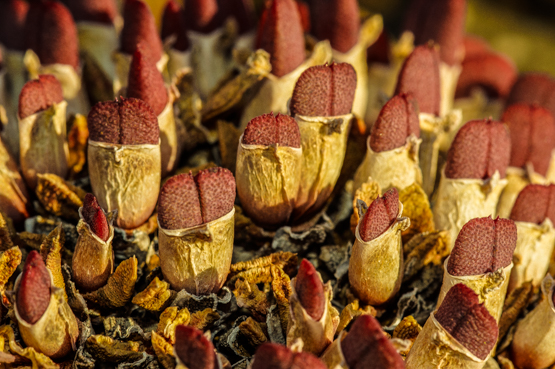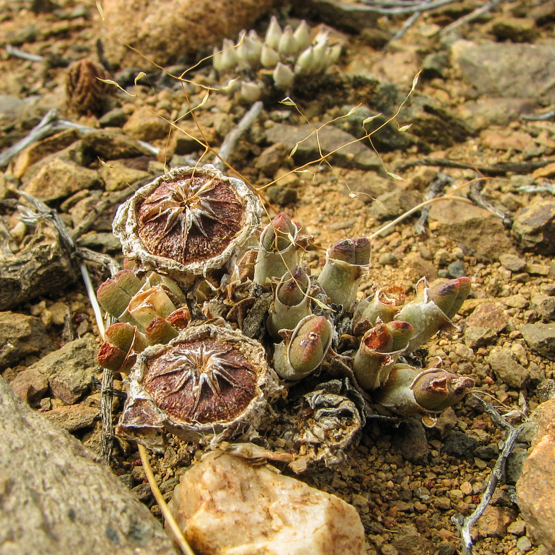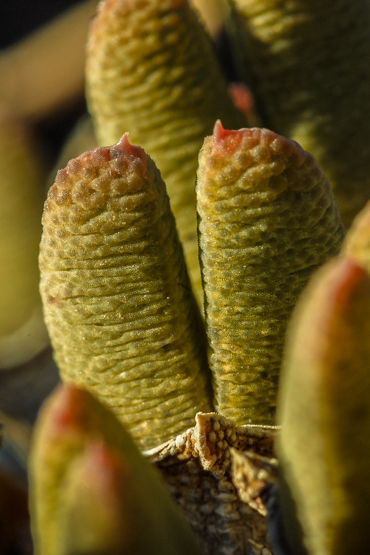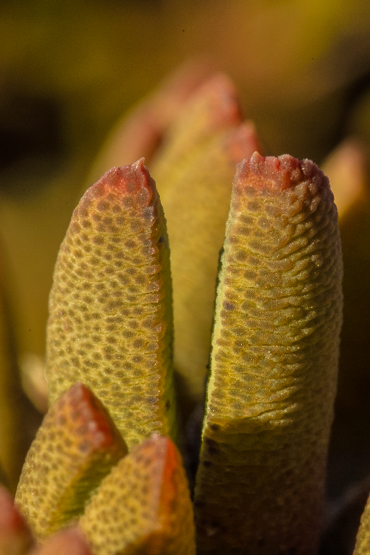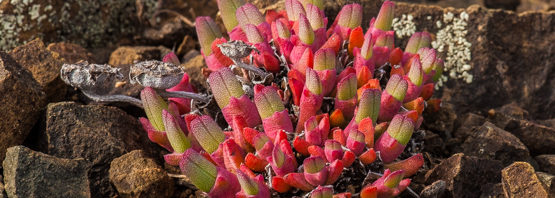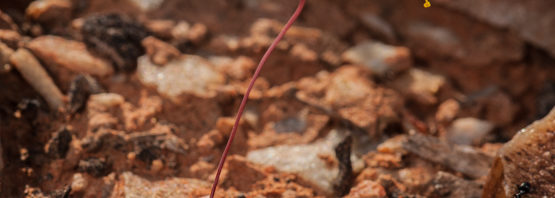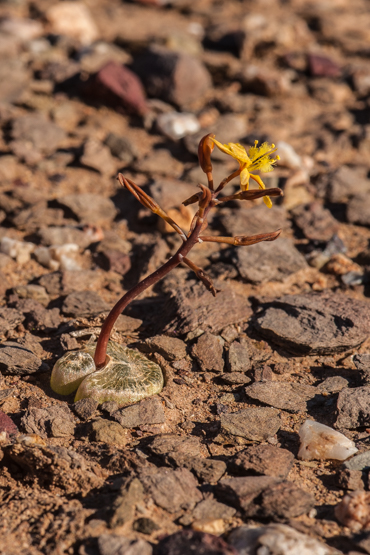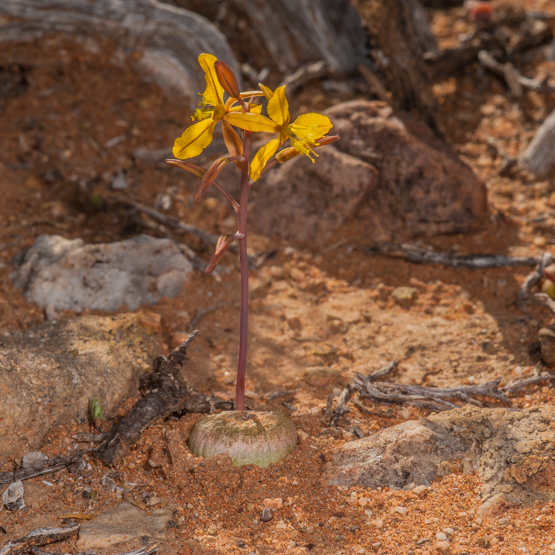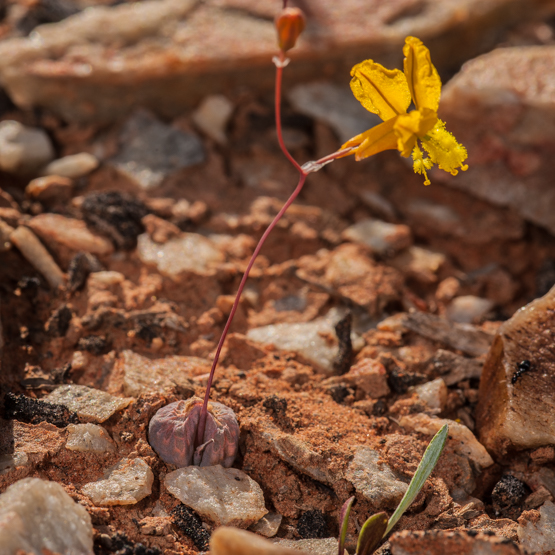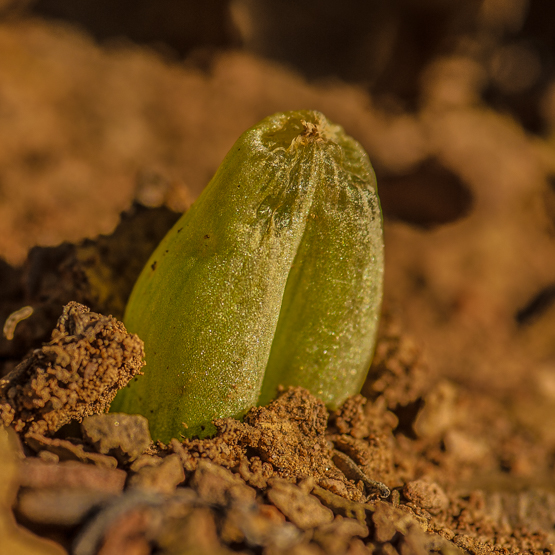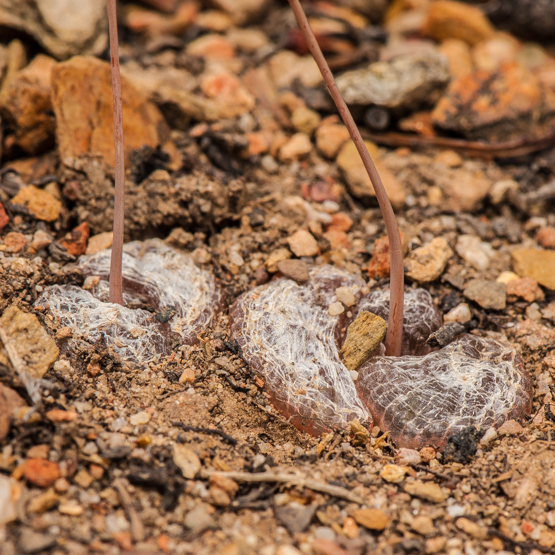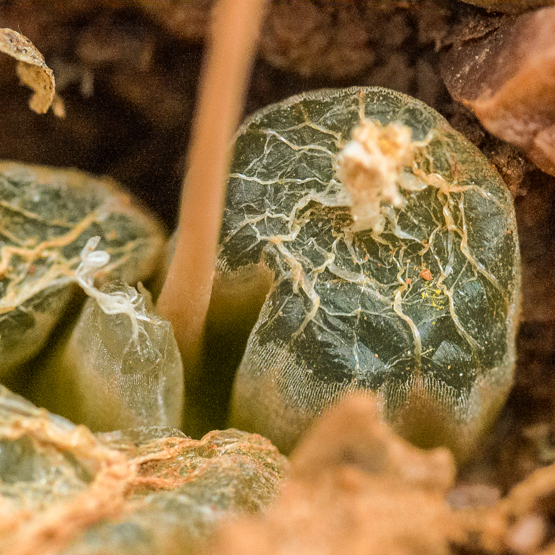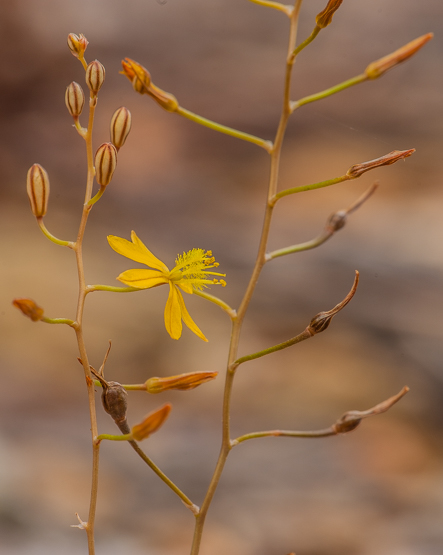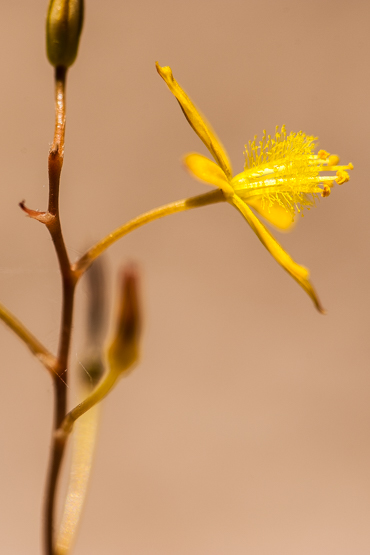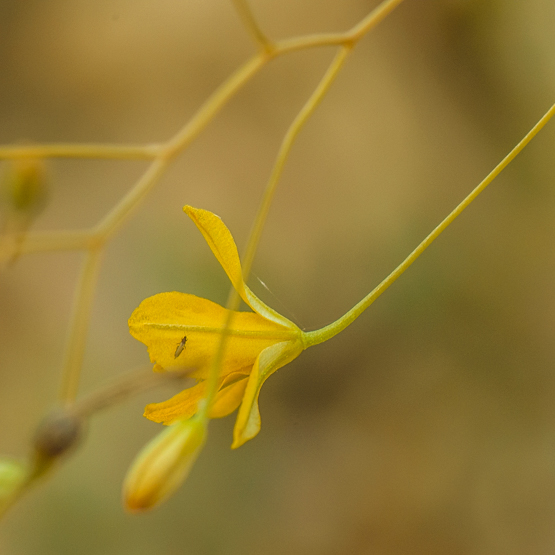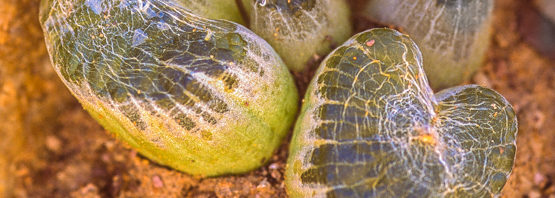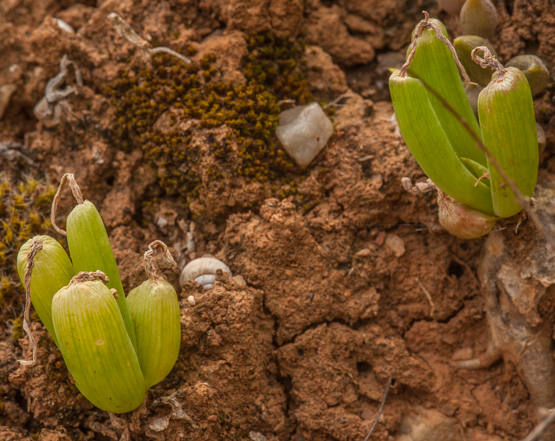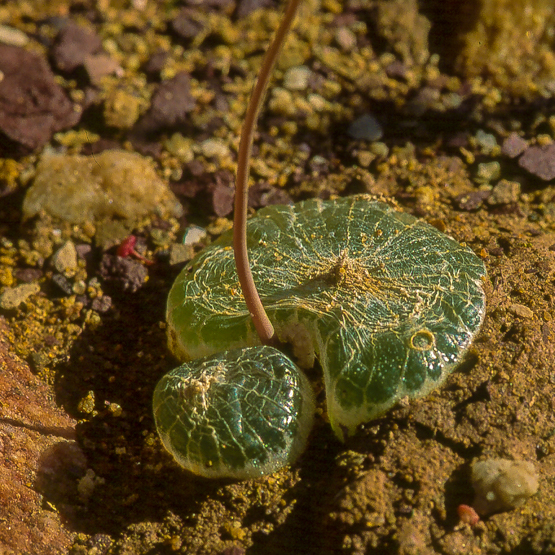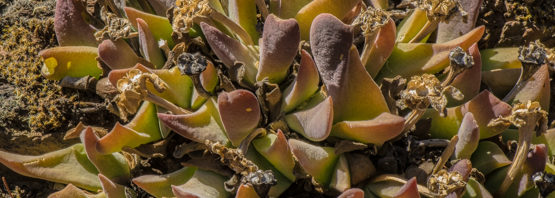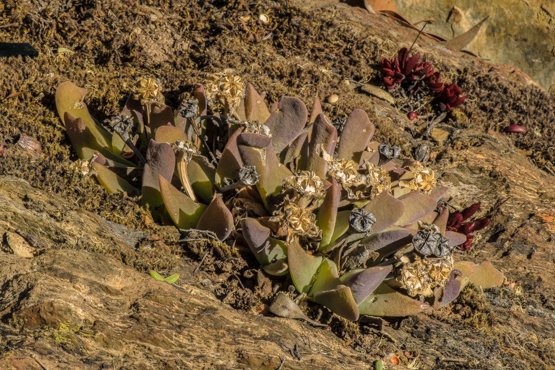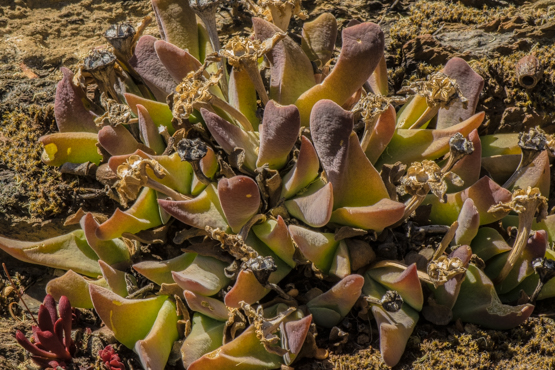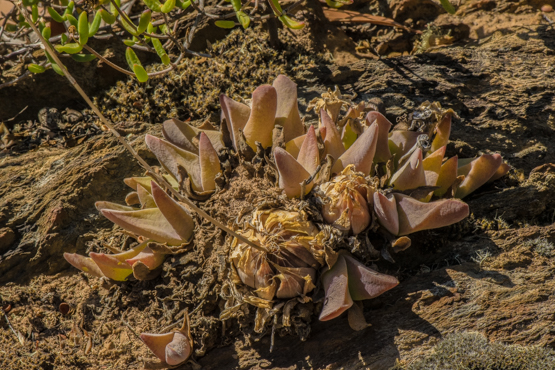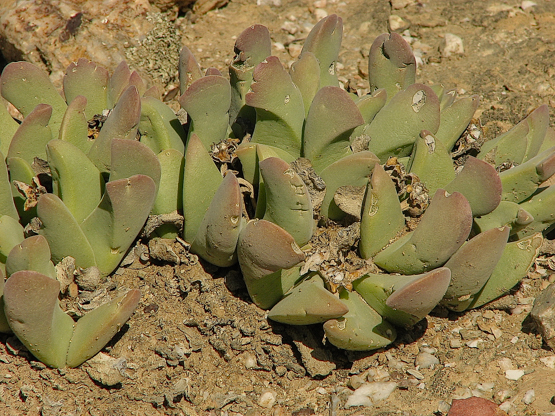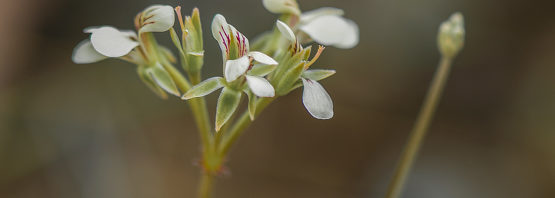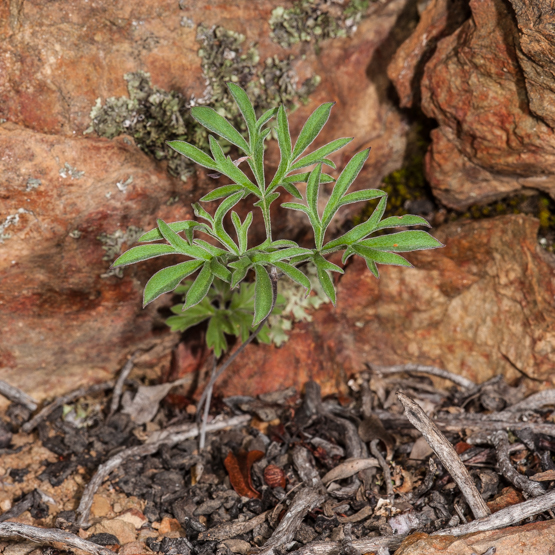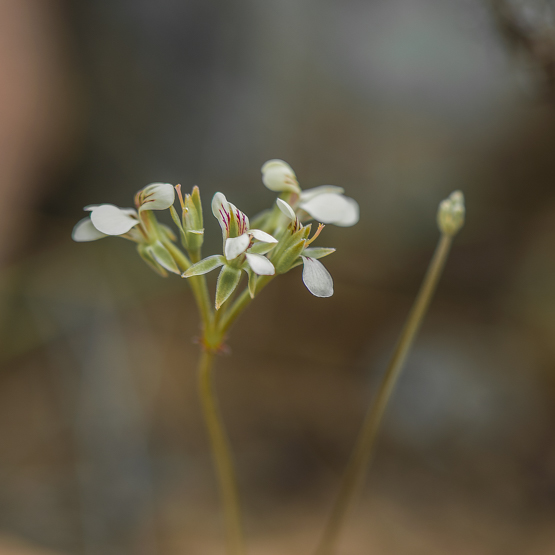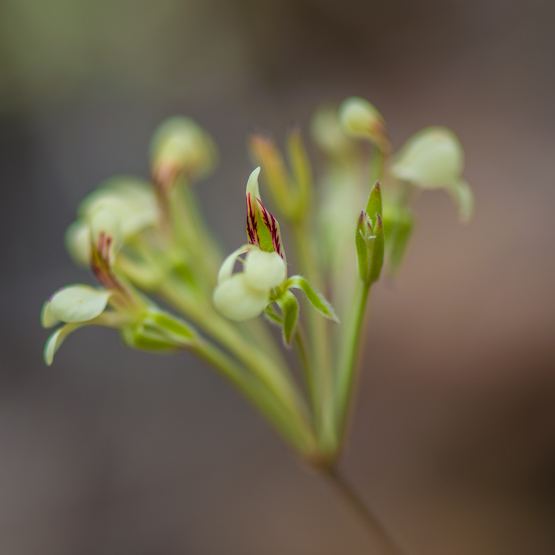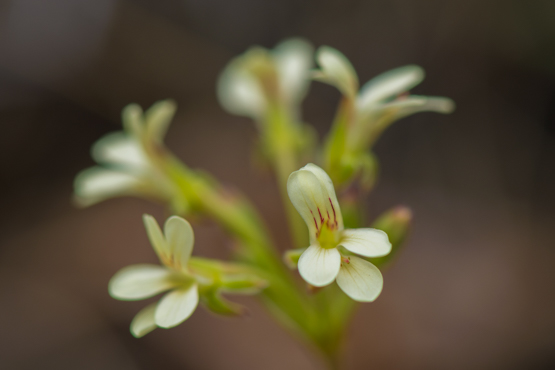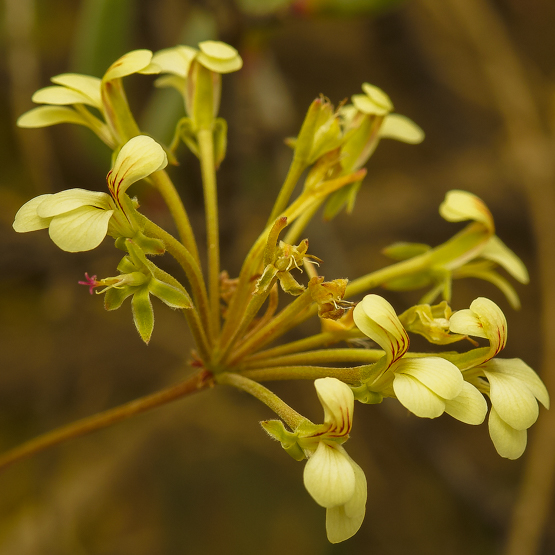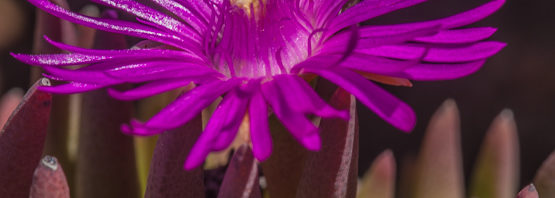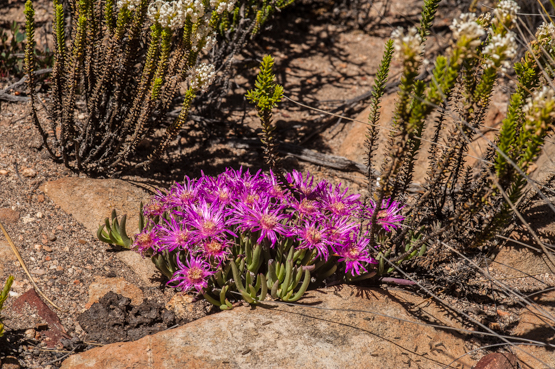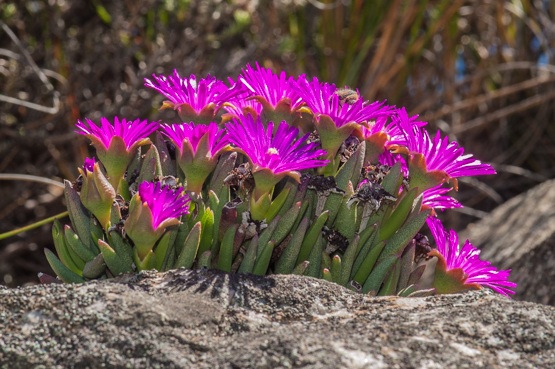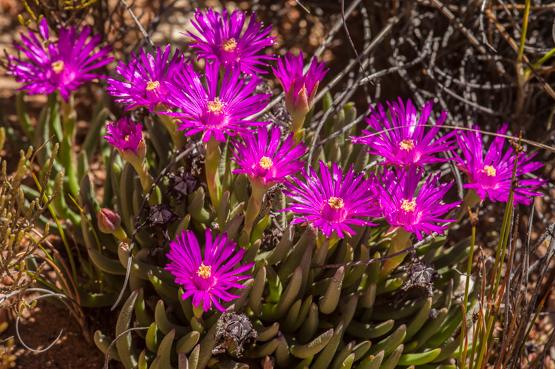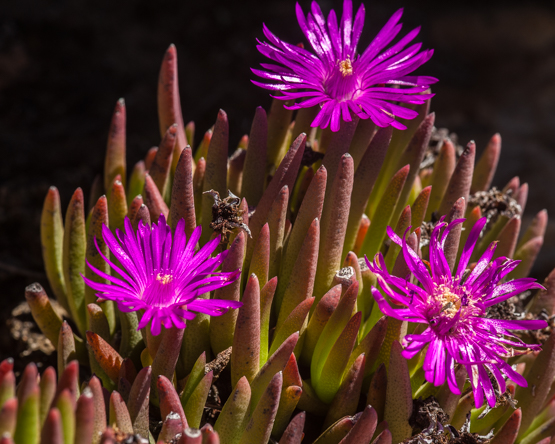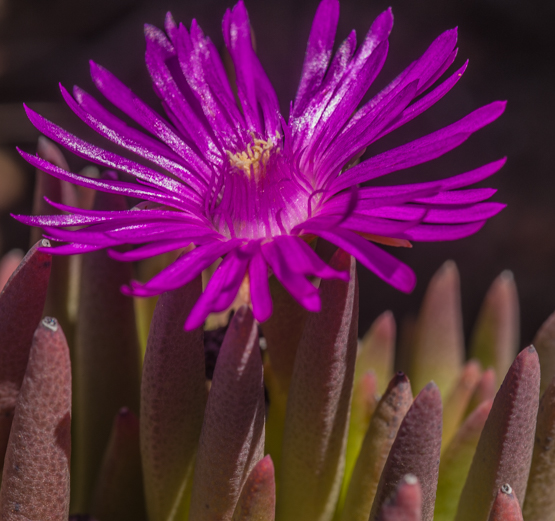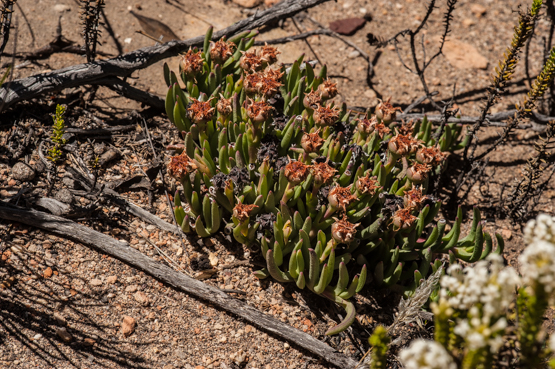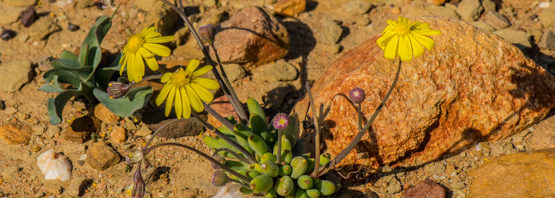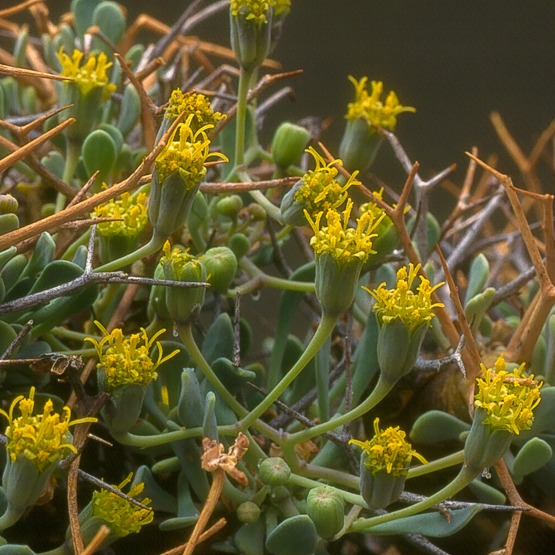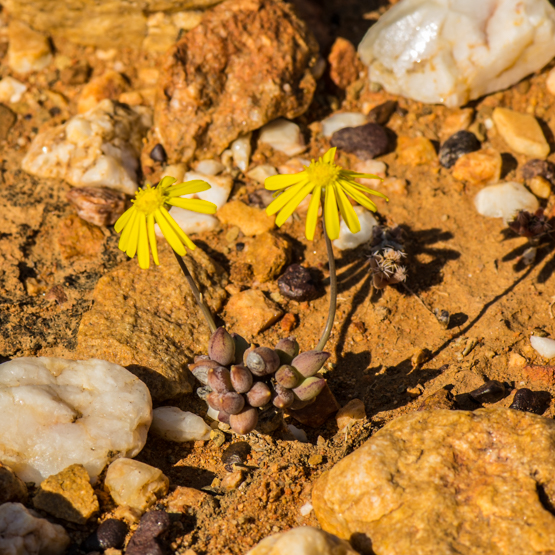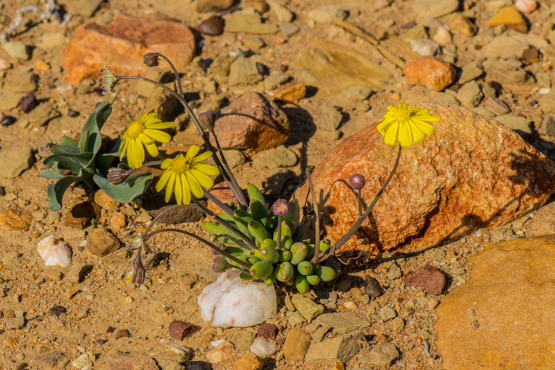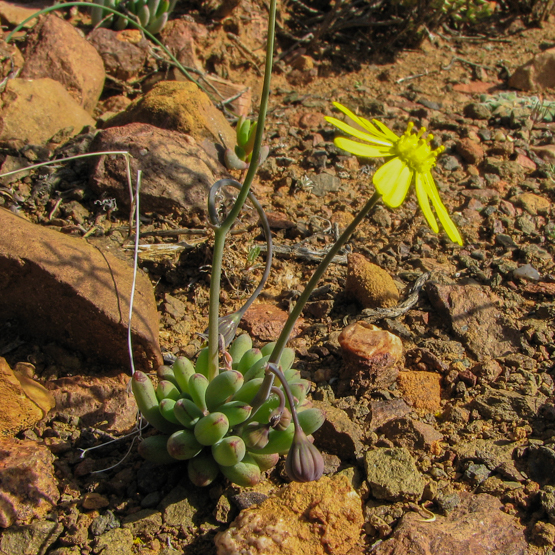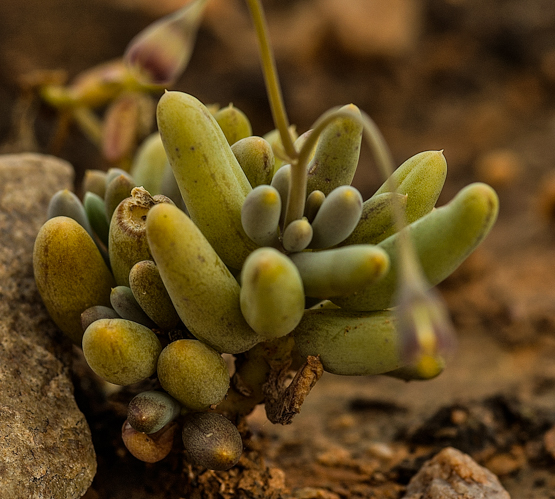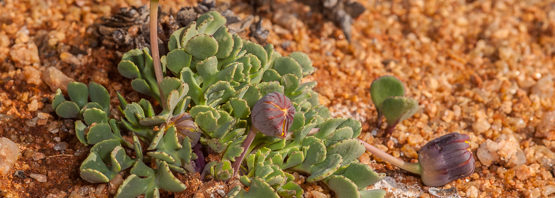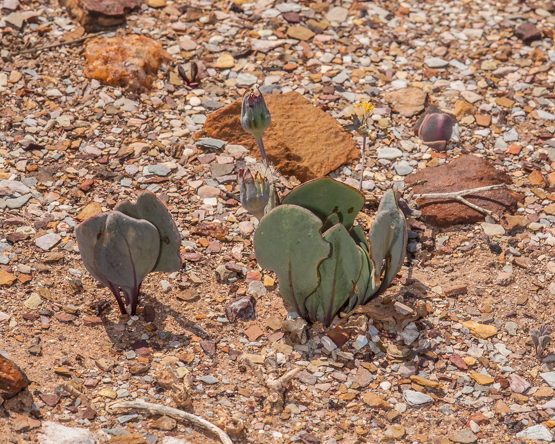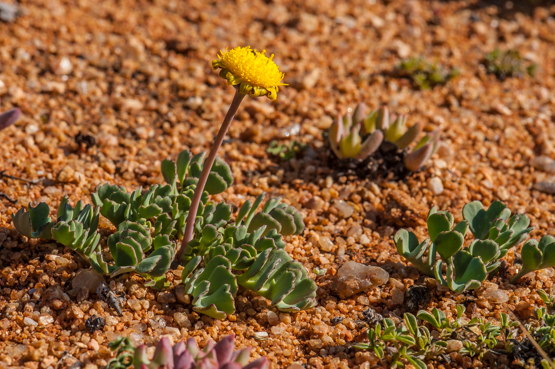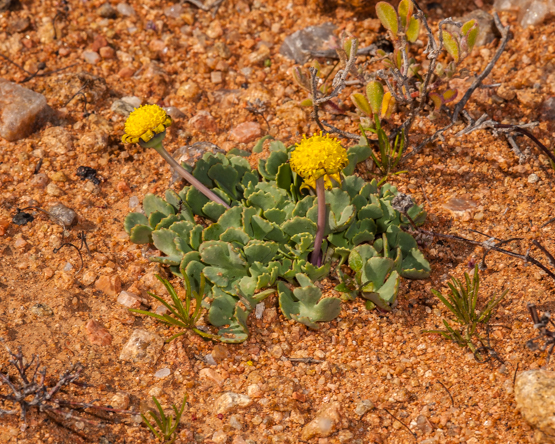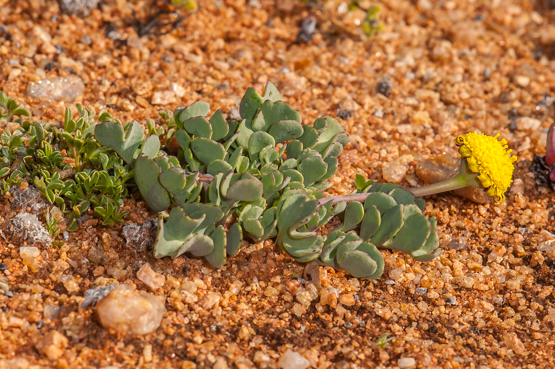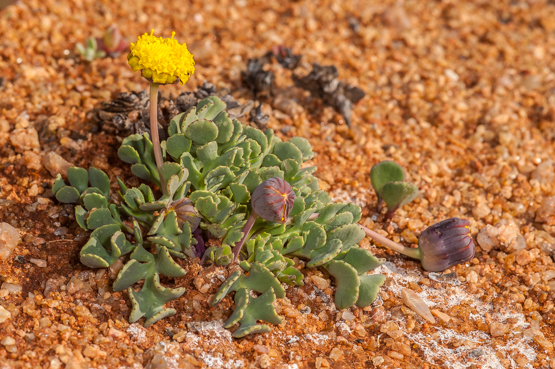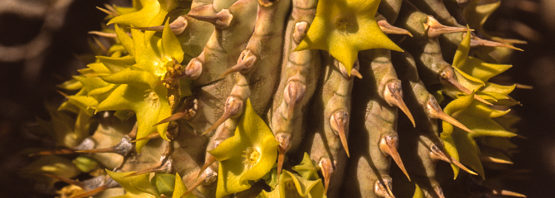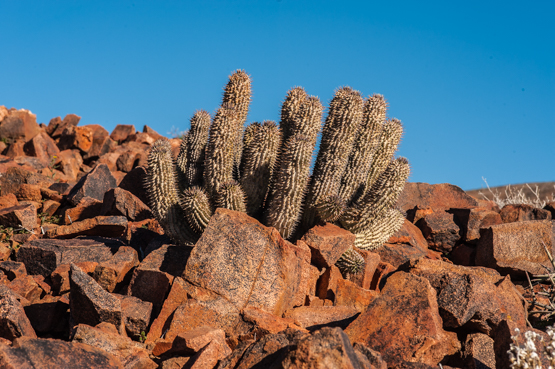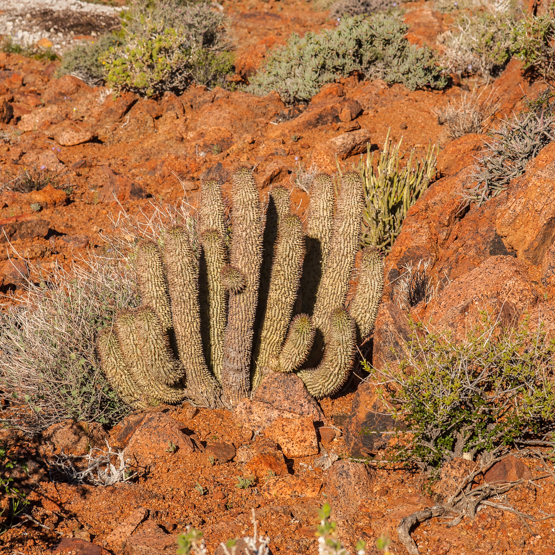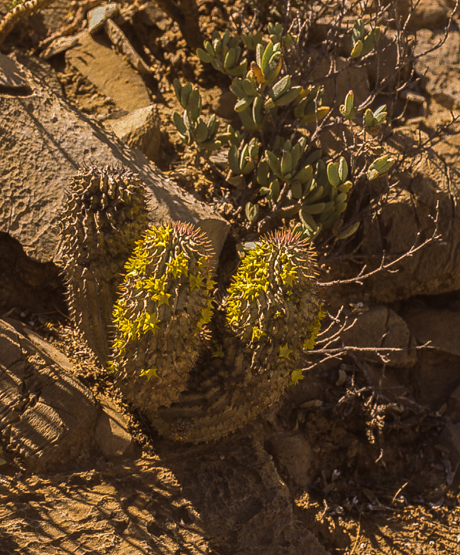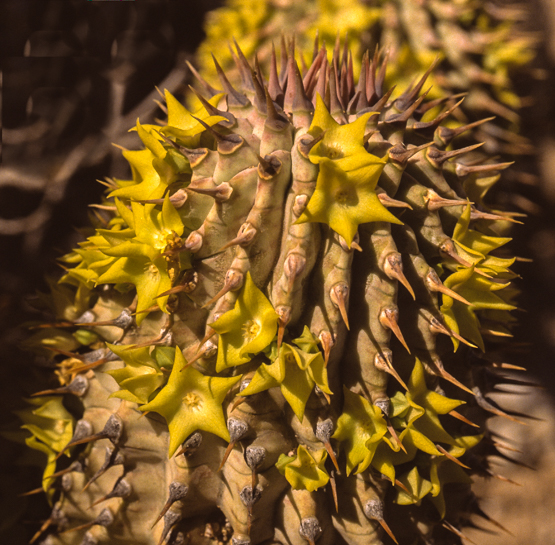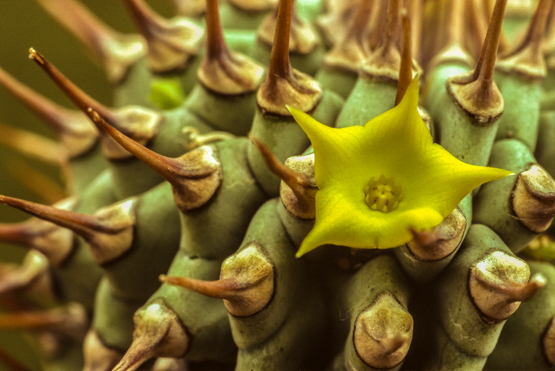One of the many older names for this plant is Mesembryanthemum cigarettiferum.
Gustav Schwantes in his magnum opus “Flowering stones and Midday-Flowers” (1957) gives a wonderful description of the species, referring to that name as follows:
“…It was a small, tufted, branched plant, on which were a number of cylindrical structures with dry skins like paper bags; from each of them projected the tip of a pair of leaves at rest within. These paper bags were formed by the drying up of earlier leaf pairs which had been joined for a long way up. The young pair of leaves inside them was. however, much more deeply divided. The surrounding bags reminded Berger so strongly of the paper mouthpiece of a cigarette that he gave it the very descriptive name of Mesembryanthemum cigarettiferum, the Mesembryanthemum bearing cigarettes. The leaves at rest within the bags, when the plants had been potted up and started into growth, grew out of the bags and developed into thick, narrow leaves such as are often found in the Mesembryanthemaceae and produced from the centre an equally narrow pair of leaves, which, however, were joined for a considerable distance so that only the extreme ends of the leaves appeared as free tips. Within this pair of leaves, which looks like a cylinder with little horns at the top, the young, but deeply divided, pair develops; it draws on the pair surrounding it so that this finally becomes the protecting skin, the paper bags referred to above. Clearly this is a case of one of the many interesting contrivances for protecting the young growth from the rigors of the dry period. This protection is achieved here in the same way as in Ruschia pygmaea (see picture #2, FN) and many other species of Mesembryanthemaceae.”
The plants form compact clumps with many branches, up to 20 cm in diameter, with
light blue-grey to green-grey leaves.
The flowers appear from July to October and are about 4.5 cm in diameter; they open in the early afternoon.
Widespread on shale slopes and flats at an altitude of 300-950m from Namaqualand to the western Little Karoo and the only Cheiridopsis that occurs this far south.
Pictures taken near Matjiesfontein on the following dates:
#1 31 Jan. 2009
#2 18 Feb. 2007
#3 and #4 17 May 2008
